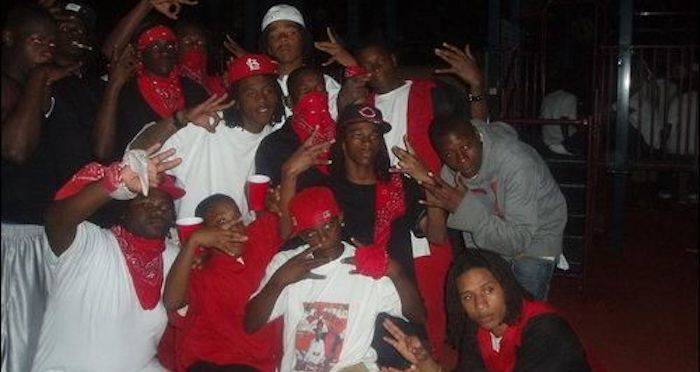
The murder, in addition to continuing Crips attacks, received sensational media coverage. Crips attacked and murdered a sixteen-year-old Los Angeles high school student, a nongang youth and son of an attorney, for the leather jacket he was wearing. The desire to obtain black leather jackets led to the first Crips murder in 1972. Gang members lived the crippin' way of life, often stealing black leather jackets. The Cribs latched onto the name Crips because a slang word crippin' meant robbing and stealing.

Before long, stealing and assaulting became the gang's chief activities.īecause of the canes used by gang members, a Los Angeles newspaper reporting on an assault called them the "Crips" for cripples. The Cribs wore black leather jackets, earrings in their left ear, and often walked with canes. They named their gang the Baby Avenues and sometimes called themselves the Avenue Cribs, a reference to their young ages. In 1969 fifteen-year-old Raymond Washington, a high school student of central Los Angeles, and a few friends formed a gang patterned after a 1960s gang called the Avenues. Filling the void was a new gang organization period. By 1970 Los Angeles youth had lost the adult leadership that had kept them working on community issues. The Los Angeles Panthers were greatly weakened and their political leadership dismantled. Viewed as a threat to the security of the nation, the FBI targeted the Panthers and other black organizations. To lend support to civil rights activism, the Black Panther Party, a powerful black political organization, opened a chapter in central Los Angeles. In 1965 the Civil Rights movement was gathering strength in Los Angeles. After the riots, the Watts community directed its youth into local clubs, looking for solutions to social injustices including police brutality. In 1965 poverty, unemployment, harsh Los Angeles police treatment of black Americans, and continuing discrimination boiled over into the Watts race riots the summer of 1965, when the police used batons on two black men being arrested. In 1960 only six gang-related murders occurred in all of Los Angeles County.

Most scuffles were hand-to-hand fights or with knives and tire irons. The western areas of the black communities were economically better off than the eastern half, so eastside gangs resented westside youths and fought west gangs.

The interracial violence among black and white gangs turned into black versus black gangs. Whites increasingly moved to the suburbs leaving the area predominately black. (AP/Wide World Photos)īy 1960 the black areas of central Los Angeles-Watts, Central Avenue, and West Adams-had grown together. Members of the Crips and Bloods gangs stand together in Los Angeles, California. The first black gangs developed in the second half of the 1940s and 1950s in defense from white teenage gangs determined to attack and harass black youth. All-black communities in the central part of Los Angeles expanded. During World War II, large numbers of black Americans migrated from the southern United States to Los Angeles for employment in the war industries, chiefly building aircraft.


 0 kommentar(er)
0 kommentar(er)
